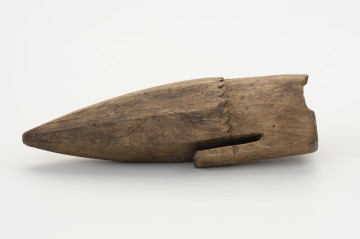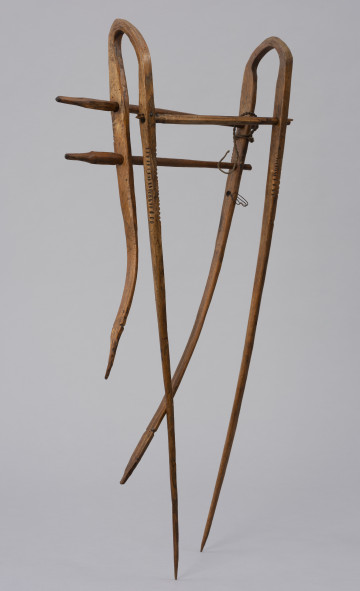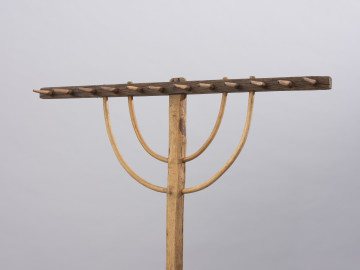
Whetstone holder
1925 — 1935
National Museum in Szczecin
Part of the collection: Agriculture
“In July, the ear already abases, yielding the gift of God, and Margaret first puts the sickle in the grain,” traditional Polish saying. The harvest was a special time in the life of the rural population. The harvest's success determined whether they would endure the winter in abundance or suffer from hunger. Various types of equipment were used for field work, including small and handy sickles. These consisted of a short wooden handle and a characteristically curved blade. Based on archaeological research, sickles were known as early as the Neolithic. Although they differed depending on the place and time of occurrence, they were built with a wooden handle and a semicircular or elliptical curved blade. In Pomerania and western Poland, sickle blades were rounded, while in eastern areas, they were slightly larger, straighter, and narrower. Traditionally, women used sickles, held in one hand, to reap by cutting a clump of plants held in the other hand. The men tied the harvested grain into sheaves. Nowadays, in the modern era of mechanised farming, sickles have fallen out of common use. However, this does not mean that they have fallen into disuse. They are still used, for example, for small jobs such as cutting weeds or tufts of grass in home gardens. The featured sickle comes from Western Pomerania and has a blade shape characteristic to the region. It is one of a dozen or so objects of this type in the ethnographic collection of the National Museum in Szczecin. Agnieszka Słowińska.
Author / creator
Object type
sickle, agricultural equipment
Technique
forging, hewn
Material
wood, iron
Origin / acquisition method
donation
Creation time / dating
Creation / finding place
Owner
Muzeum Narodowe w Szczecinie
Identification number
Location / status

1925 — 1935
National Museum in Szczecin

1900 — 1920
National Museum in Szczecin

1960 — 1965
National Museum in Szczecin
DISCOVER this TOPIC
National Museum in Lublin
DISCOVER this PATH
Educational path